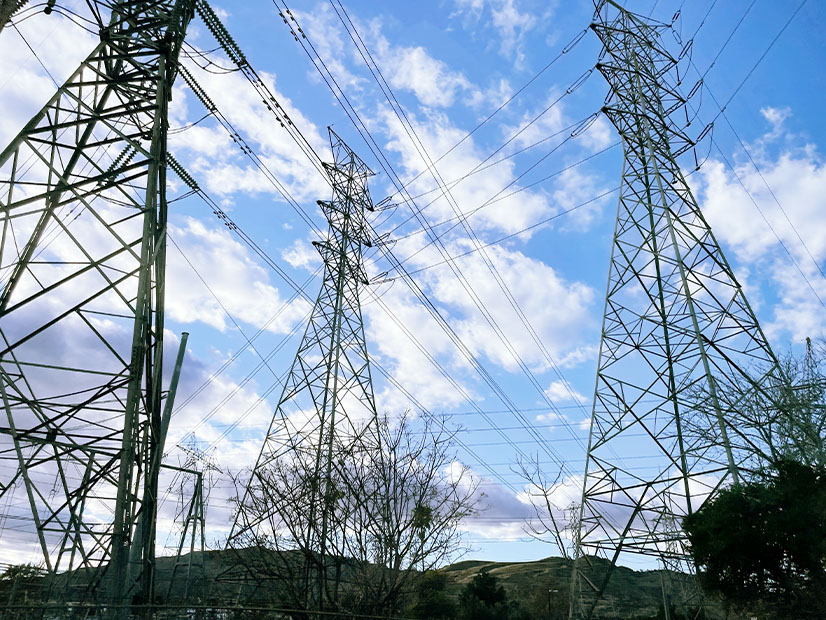An agreement signed by California’s three electricity planning entities will help coordinate resource and transmission planning in California to better reach the state’s clean energy goals while maintaining grid reliability, CAISO CEO Elliot Mainzer told the ISO’s Board of Governors on Thursday.
The memorandum of understanding signed by the California Energy Commission, the state Public Utilities Commission’s and CAISO is a “new blueprint for our state” that provides for closer links between the planning processes of each party, Mainzer told the board in his monthly CEO briefing.
In California’s divided energy planning process, the CEC forecasts demand while the CPUC handles resource planning and CAISO deals with transmission needs.
“All of those are [gears] that need to be synchronized so that we can effectively onboard resources in California,” Mainzer said.
Outmoded planning was partly to blame for the state’s rolling blackouts in August 2020, CAISO, the CEC and CPUC said in an October 2020 report to the governor. (See CAISO Says Constrained Tx Contributed to Blackouts.)
The recent MOU was signed in December and posted by CAISO to its website Jan. 19. It supersedes a 2010 agreement that included only CAISO and the CPUC.
The MOU draws closer links between the CPUC’s Integrated Resource Planning (IRP) process, the ISO’s transmission planning process, including its conceptual 20-year outlook, the CEC’s Integrated Energy Policy Report (IEPR), which identifies the state’s energy needs and its activities under Senate Bill 100, which requires all retail customers to be served with 100% clean energy by 2045.
The MOU’s provisions include a requirement that the CEC, CPUC and CAISO “implement a joint work plan” on the CEC’s IEPR and SB 100 proceedings to align the three parties’ planning processes and maintain a flow of information between them. For example, under the new MOU the CPUC must incorporate the CEC’s longer-term forecasts into its IRP process, and CAISO has to supply the results of its transmission planning and interconnection studies to the CPUC for resource planning.
CAISO intends to “put that MOU into practice [this year] and … to transition from what I’ve characterized as sort of reactive transmission planning to much more leading and proactive transmission planning,” Mainzer said.
The ISO expects to release its annually updated transmission plan in May and to “identify the forward-looking zones where we think the next big resource batholiths will be opened up,” he said. “Our hope and expectation is that we’re going to be using [our] transmission planning … to do a much more effective job of shaping queuing and procurement … because we simply can’t be in the place of having to react and then we need 5,7, 10 years to get developed.”
“Transmission is a leading indicator of planning rather than a lagging indicator,” Mainzer told the board. “I’m hoping to be here by the end of this next year with a significant improvement in establishing those orders of operations.”
As an example of the need to improve the process, Mainzer cited CAISO’s efforts to deal with its “Cluster 14” queue of interconnection requests, which he detailed in his memo to the board.
“In April 2021, the ISO received 373 interconnection request applications totaling more than 50 gigawatts (GW) of renewable generation and more than 100 GW of energy storage in the Cluster 14 application window,” Mainzer said in the memo. “This was more than three times the average of 113 applications over the last decade, and more than double the previous high of 155. Because of the challenge for the transmission owners and the ISO to process that many applications, the ISO extended the phase 1 study process by a full year.”
At least 160 of the applications are moving to phase 2, and “that number may yet grow to more than 200 projects representing more than 67 GW, since a number of interconnection customers are still in the final validation process.”
The next group of interconnection requests, Cluster 15, could generate 300 new applications by April, putting additional strains on transmission planners, Mainzer wrote.
“The excessive number of applications also provides even more impetus to move forward with overhauling our interconnection process in keeping with the objectives of the recently signed MOU with the CPUC and the CEC to focus on prioritization through alignment of state resource planning, ISO transmission planning, procurement processes, and the interconnection process,” he said.


